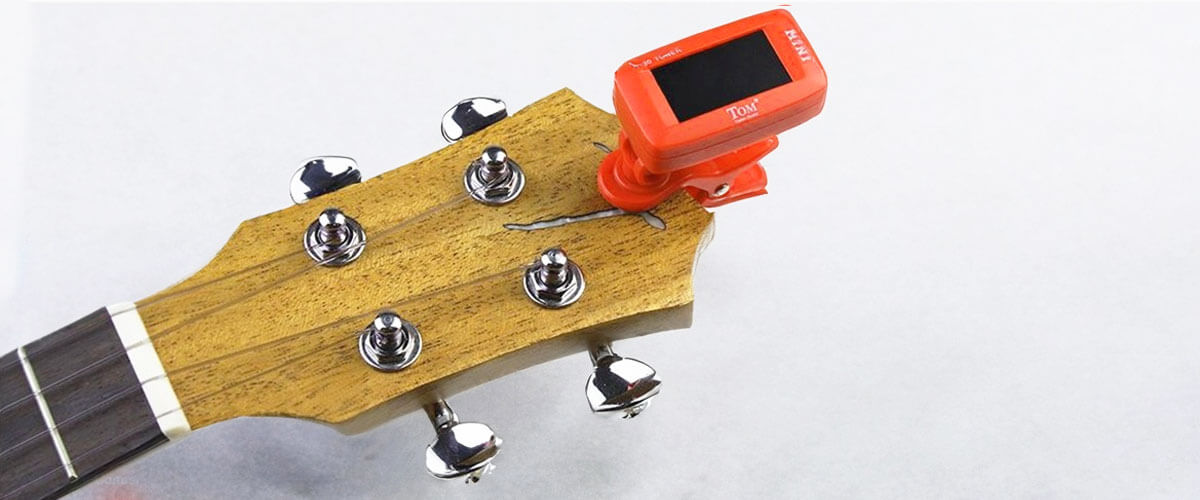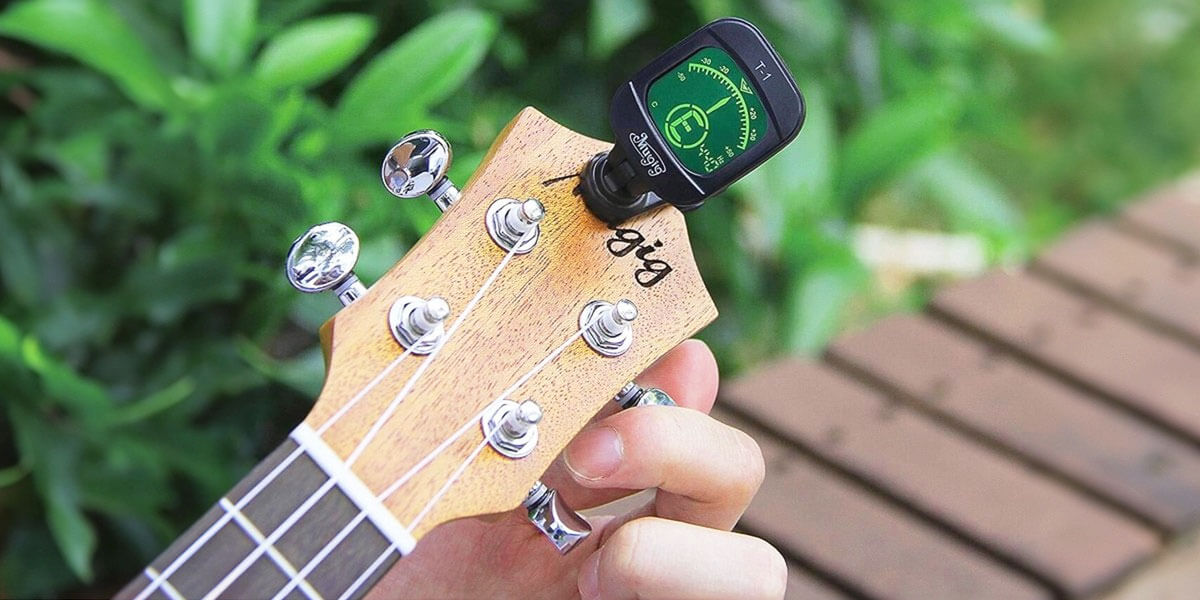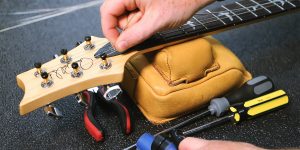You’ve come to the right place if you’re wondering how to tune a ukulele with a guitar tuner. Tuning your ukulele accurately is the key to producing sweet and melodious chords. In this guide, I will walk you through the straightforward steps of achieving pitch-perfect harmony on your ukulele by harnessing the power of a common tool – the guitar tuner.
Standard ukulele tuning
The standard ukulele tuning is G-C-E-A, regardless of whether it’s a soprano, concert, tenor, or baritone instrument. Each of these four strings corresponds to a specific note and pitch:
- G (4th string) – The top string, closest to your chin, is adjusted to the note G. Its pitch is higher than the next three strings.
- C (3rd string) – The third string is set to the note C. It creates a harmonious interval with the G cord.
- E (2nd string) – The second cord is set to the note E. It adds to the melodious progression of notes.
- A (1st string) – The bottom one is tuned to the note A. It provides a resonant foundation for the overall sound.
And that’s why tuning a ukulele with a tuner is essential to ensure your instrument produces accurate notes and chords.
Choosing the right guitar tuner

When it comes to ukulele tuning with a guitar tuner, choosing the appropriate device type is pivotal. Various common options are available, each boasting unique features and benefits. However, a chromatic device is recommended due to its capability to detect all pitches, including those of the ukulele. This versatility ensures accurate tuning for every string, making it a suitable choice for instrument players.
Steps to Tune a Ukulele with a Guitar Tuner
Tuning your instrument using a guitar tuner is a straightforward process. Here’s how:
- If you use a clip-on tuner, secure it to the ukulele’s headstock. For mobile apps, position your phone’s microphone close to the sound hole or bridge.
- Pluck the A cord and observe the tuner’s display. Adjust the tuning peg until the tuner indicates that the string is set.
- Repeat the process for the E string. Turn the peg until the device confirms the string is properly adjusted.
- Set the remaining C and G strings using the same method.
Now, you can ensure that your ukulele is ready to produce harmonious sounds.
Testing the tuning

Simply tuning open strings to the device isn’t enough if you want chords and harmonies to sound distortion-free. You need to do a little analysis and testing. Here’s how to achieve it:
- Select a few basic chords like C, G, F, and Am. These chords help assess the overall instrument condition.
- On a well-set ukulele, chords should harmonize without any obvious dissonance or clashing notes.
- Pay attention to any “beating” or wavering sounds while playing chords. This can occur if two notes are slightly misaligned.
By employing these techniques, you can ensure that not only individual strings but also chords resonate accurately on your ukulele.
Tips for maintaining proper tuning
To minimize tuning degradation and streamline your pre-play preparation, consider these recommendations:
- Storage and temperature:
- Store your ukulele away from direct sunlight, radiators, or areas with drastic temperature changes.
- Providing a protective layer around your instrument, a case, or a gig bag shields it from environmental fluctuations.
- Tuning pegs:
- Regularly check for any signs of wear, stiffness, or looseness in the pegs.
- If pegs feel loose, gently tighten them to avoid sudden tension changes.
- Maintenance:
- After playing, wipe down your strings with a clean cloth.
- Over time, strings lose their elasticity and tonal quality. Replace them when they show signs of wear or sound dull.
- Nut and bridge care:
- Ensure that the nut and bridge slots are clean and free from debris.
By following these suggestions, you can use a guitar tuner to tune a ukulele, ensuring consistent stability and elevating your overall playing enjoyment.














